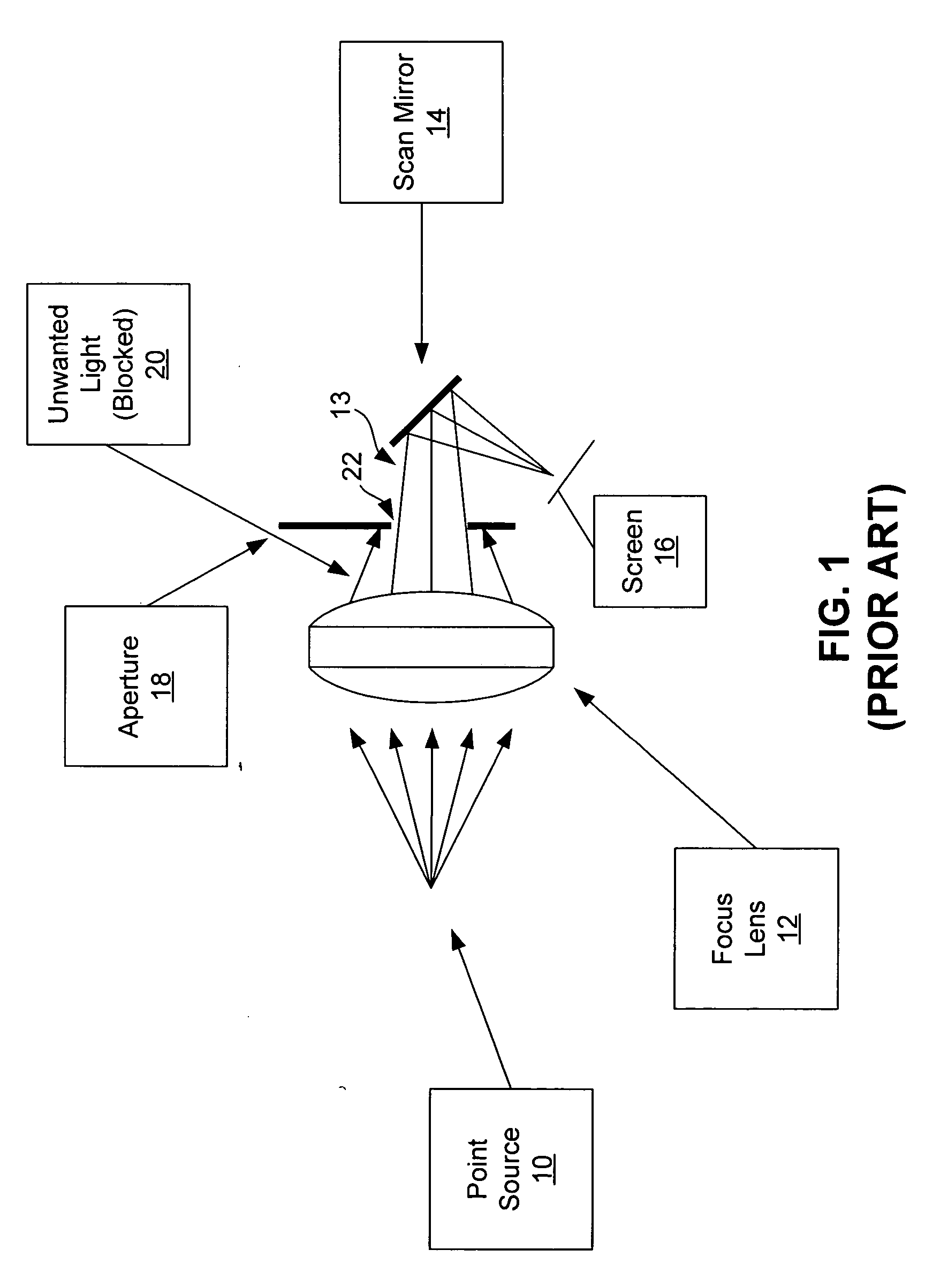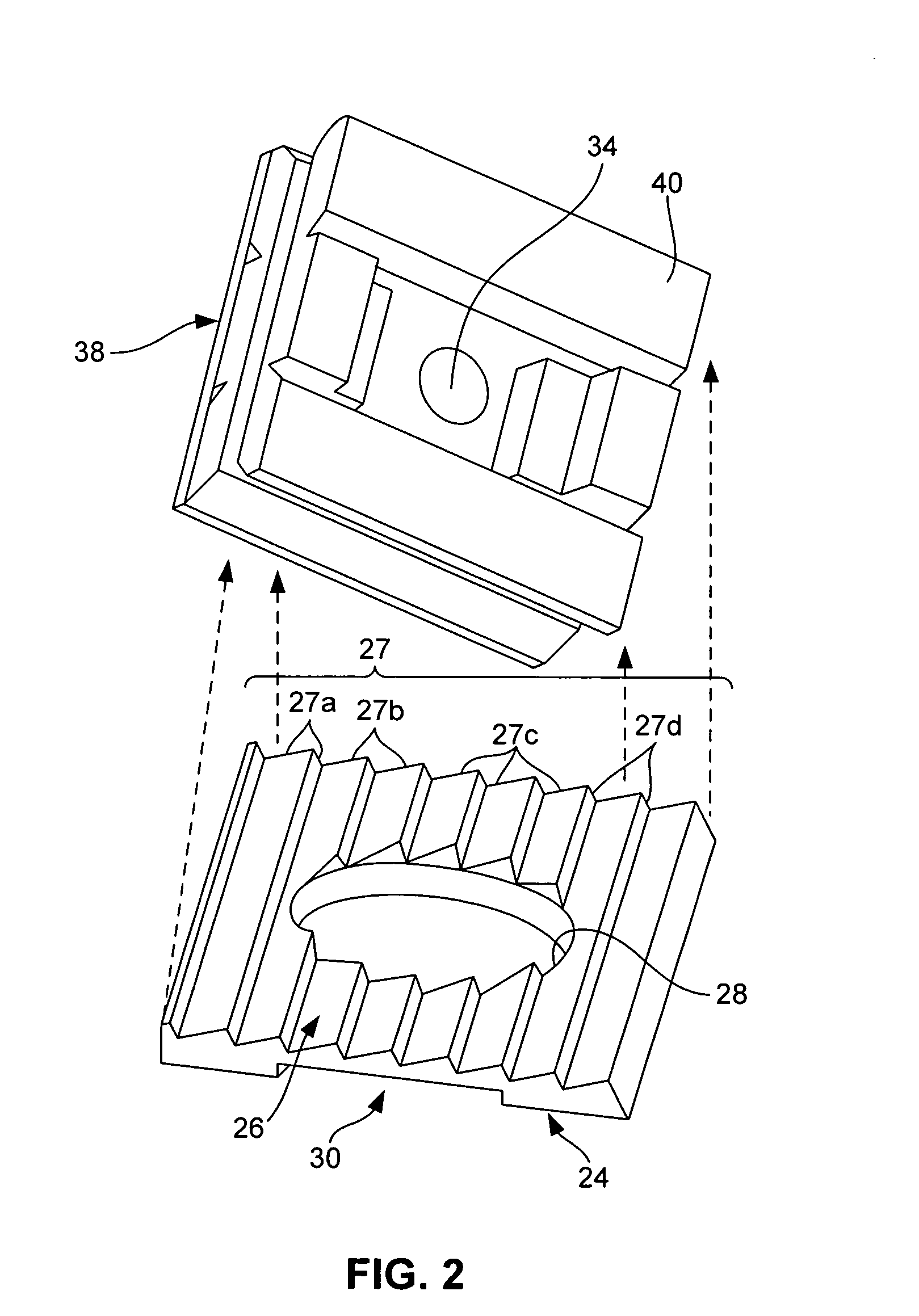Aperture plate and related system and method
a technology of aperture plate and aperture plate, applied in the field of aperture plate, can solve the problems of creating visible image artifacts, bright spots in the image, visible artifacts in the viewed image, etc., and achieve the effect of reducing the cost and/or difficulty of manufacturing an imaging system
- Summary
- Abstract
- Description
- Claims
- Application Information
AI Technical Summary
Benefits of technology
Problems solved by technology
Method used
Image
Examples
Embodiment Construction
[0019] Referring to FIG. 2, an aperture plate 24 has a surface treated to absorb peripheral light or direct peripheral light away from a viewer's field of view. By directing the peripheral light away from the viewer's field of view, the plate 24 may eliminate or reduce the intensity of image artifacts, such as viewable bright spots. Treatments include providing a patterned surface.
[0020] With further reference to FIG. 2, the exemplary aperture plate 24 has formed on one face an angled surface structure 26, which surrounds a central aperture opening 28. A MEMS mirror 34 is contained within a housing 38, which has an open or transparent top 40 onto which the aperture plate 24 is mounted with the aperture opening 28 in optical alignment with the mirror 34 and the angled surface structure 26 facing away from the mirror toward a source beam of light as illustrated in FIG. 3. When so assembled, the plane of a face 30 (opposite structure 26) of the aperture plate 24 is substantially paral...
PUM
 Login to View More
Login to View More Abstract
Description
Claims
Application Information
 Login to View More
Login to View More - R&D
- Intellectual Property
- Life Sciences
- Materials
- Tech Scout
- Unparalleled Data Quality
- Higher Quality Content
- 60% Fewer Hallucinations
Browse by: Latest US Patents, China's latest patents, Technical Efficacy Thesaurus, Application Domain, Technology Topic, Popular Technical Reports.
© 2025 PatSnap. All rights reserved.Legal|Privacy policy|Modern Slavery Act Transparency Statement|Sitemap|About US| Contact US: help@patsnap.com



